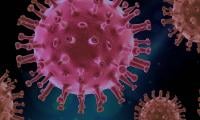The issue of the shockingly poor water quality across Pakistan has been highlighted in the last few months. First, it was discovered that almost 90 percent of the water supplied to homes in Pakistan is contaminated. Now, it has emerged that at least 69 percent of water sources are contaminated as well. This is a serious challenge for our public health authorities and one that has not been tackled with the emergency response that should have been seen. The new data has emerged after surveys conducted by the Pakistan Council of Research in Water Resources (PCRWR) of water resources in 25 cities across the country. The surveys were conducted in 2015-16 – almost 10 years after the last survey of National Standards for Drinking Water Quality. Only 114 out of 369 sample water sources in the survey were found free from contamination. Almost 57 percent of the samples contain bacterial contamination, and almost six percent of the water sources are contaminated with arsenic while 15 percent are contaminated with chlorine.
These statistics are alarming to say the least, and ideally authorities should be taking this matter up as a priority. Instead, authorities are happy to focus on larger infrastructure projects without doing the unheralded work of fixing our water supply. Millions of people suffer short- and long-term illnesses due to the poor quality of water supply. Many of the issues, such as bacterial contamination and the mixing of heavy metals, can be solved through tried and tested methods. But there has been little effort from subsequent governments to solve the water crisis. Punjab has announced a safe water project but the priority seems to be on the consumption side, instead of the supply side. The clean water issue is a major concern that should be solved at both consumption and supply levels. What is required now are water treatment plants along with an effort to clean up water supply sources. Reaching the Sustainable Development Goal challenge of 100 percent clean water by 2030 will be near impossible. Clean water must become a national priority. Otherwise, we continue to face a terrifying national health calamity on a daily basis.















